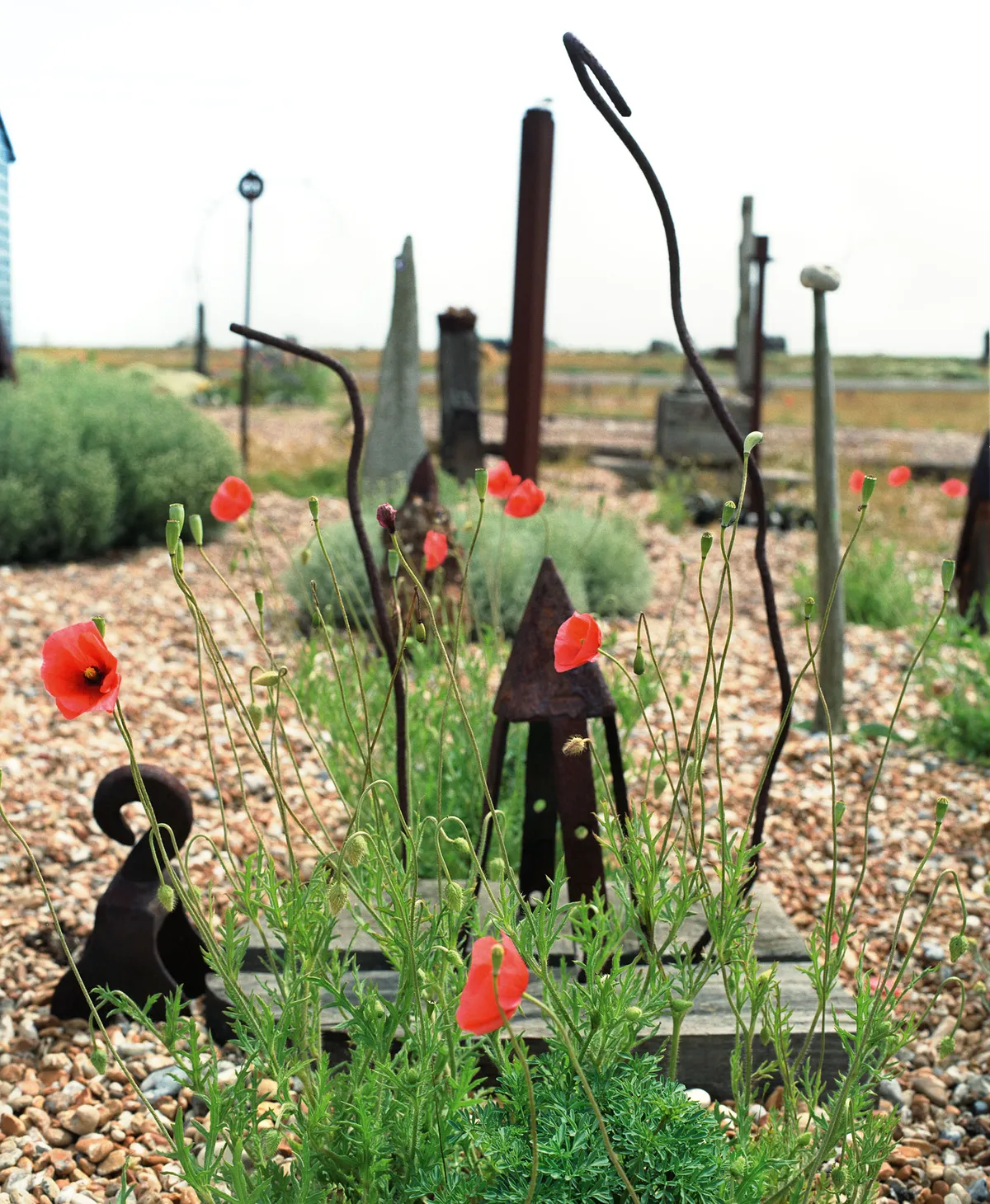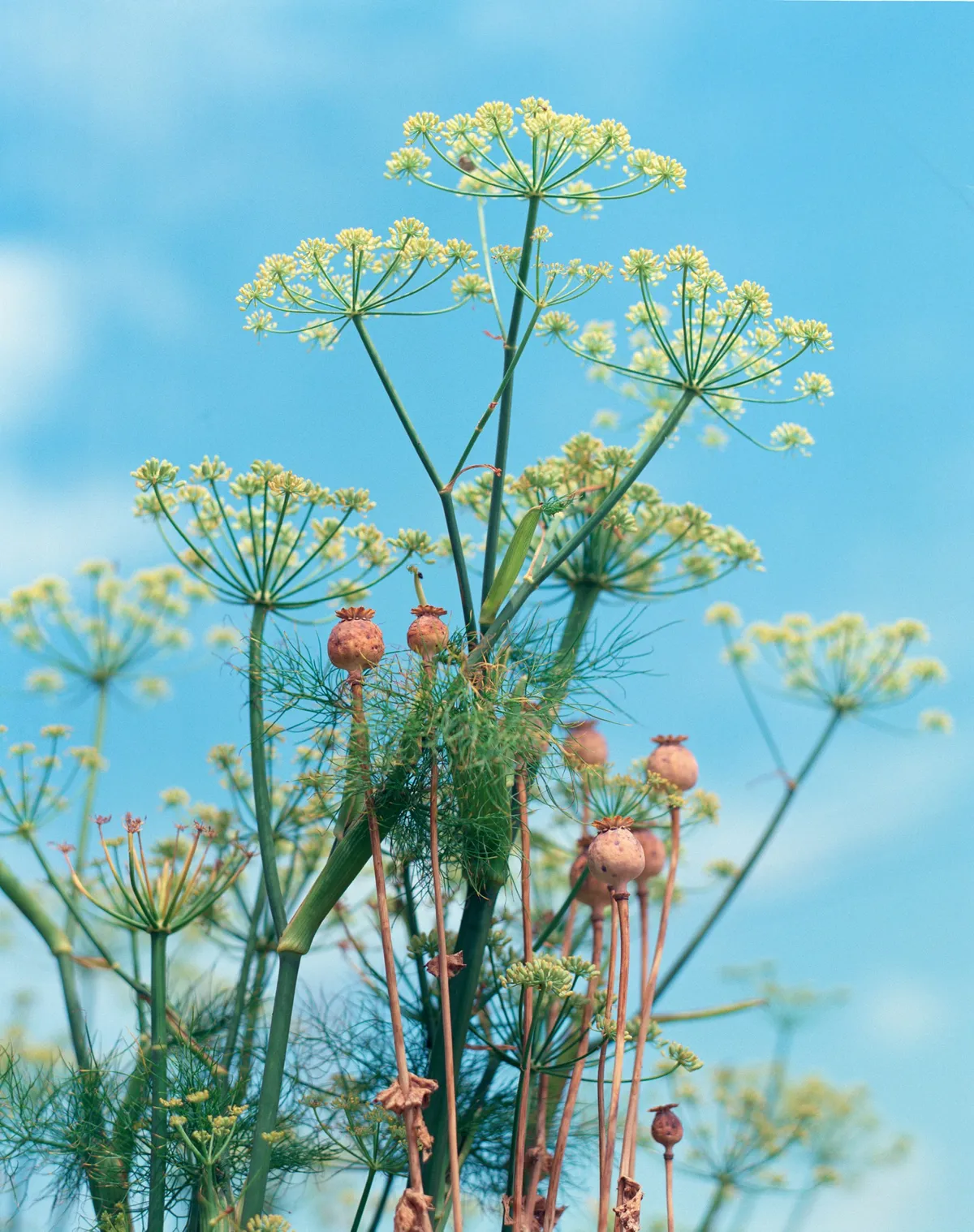Times passes; it sweeps unhindered across the shingle of Dungeness beach in Kent. The skeletal pyramid that once stood proudly as part of the Pluto Pipeline, refuelling ships at sea for the Normandy landings, has over time become a ghost, turned to rust, then dust, and now gone.
The sun, the sea, the salt in the wind, erode everything here. Nothing is permanent, not even the land itself, a temporary shifting spit of shingle jutting out into the English Channel. The winter storms or the bulldozer have taken most of the old fishermen’s sheds from the beach, wiped clean by time’s incoming tide. Derek Jarman died in February 1994 (less than two weeks after his 52nd birthday), leaving behind a fine legacy of films, paintings, books… and a small, black, tar-painted fisherman’s cottage in the shadow of Dungeness nuclear power station.
Its small garden gained acclaim after the publication of the book, Derek Jarman’s Garden, in 1995 and many subsequent magazine articles (the first of which appeared in Gardens Illustrated in the same year). As a garden it is unusual and inspirational. It has always had a steady stream of visitors, from curious passersby to people making pilgrimages from all over the world.
My story with the garden started in 1990 when I was commissioned to photograph Derek. Pulling up on Dungeness Road, I stared out of the car window on to a post-apocalyptic nuclear vision: a long, snaking road strung with a line of black fishermen’s cottages like tar-covered fairy lights; a beach strewn in a mess of seemingly abandoned fishing boats and huts, which looked like they’d just tumbled from the sky and landed randomly among the sea kale that inhabited the beach.
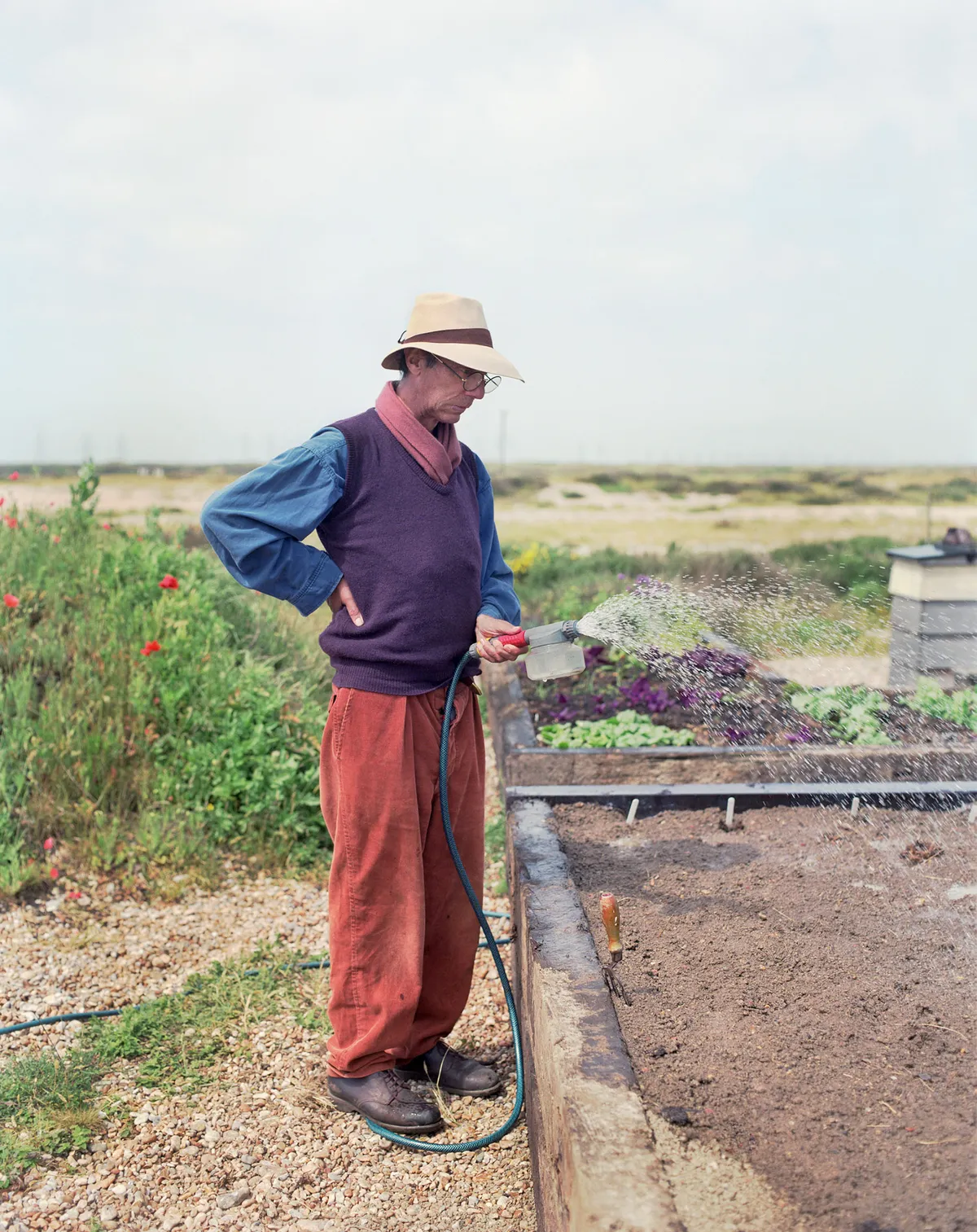
Dungeness was England through the looking glass, not William Blake’s bucolic vision of a Jerusalem in this ‘green and pleasant land’. Stark, barren, the sun searing down or rain whipping across the landscape – everything seemed to be dying. Bleached by the sun, ripped by the wind, eaten by salt, laid bare and exposed by the enormity of the sky. A world stripped to its bones, abandoned and motionless except for the dried seedheads of sea kale blowing like tumbleweed in the shadow of the power station. The images are etched in my memory.
Derek was standing outside Prospect Cottage in an old French labourer’s shirt, long, white linen blowing like a sail in the wind, watering can in his hand. Looking back, I can still feel my heart quake; the day seemed so perfect, outside of time. But somewhere a clock was ticking; I suppose we just couldn’t hear it, drowned out by the sound of the wind and the tide running along the shoreline. After that first day we became good friends. I was to spend much of the next four years gardening with him at Prospect Cottage, or visiting nurseries strung out along the various possible routes between London and the Kent coast.
In an old photograph Derek stands as a child among bright-red geraniums, smiling, clutching a watering can. It looks like Italy, the perfect picture of happiness. I’ve often thought of Prospect Cottage as a child’s garden, particularly at the front. Neat beds of wallflowers and poppies lined with white dragon’s teeth flints, cockleshells all in a row. It is Derek’s childhood dream of a garden, transposed by an artist and gardener into the eerie landscape of Dungeness.
The garden is without boundaries or fences and as a consequence stretches unhindered to the horizon in all directions. There are no lawns, no soil, just shingle. Ideas and notions of what makes up a garden are gone. It is blissfully and intriguingly without the usual semiology of gardens. It is a cottage garden, on a small, domestic scale. The garden anchors the cottage to the golden shingle and radiates out, slowly dissolving into lichens, broom and honey-scented kale as you move toward the horizons. There is a freedom, an opportunity not many people get, to garden outside normal conventions and work openly and directly with nature.
The garden at the front was the first to be laid out. More Mondrian than Monet, it is a series of simple, geometric formal beds drawn out with white flints collected from the beach, planted with circles of sage and lavender then splashed with red field poppies, an echo perhaps of the Italianate gardens of Derek’s childhood. There’s something unsettling about the vastness of the view and the seemingly chaotic work of Mother Nature’s hand. But as you move further from the cottage, formality loosens its grip until the garden relaxes and merges into the natural flora of the ness [an Old English word for a headland].
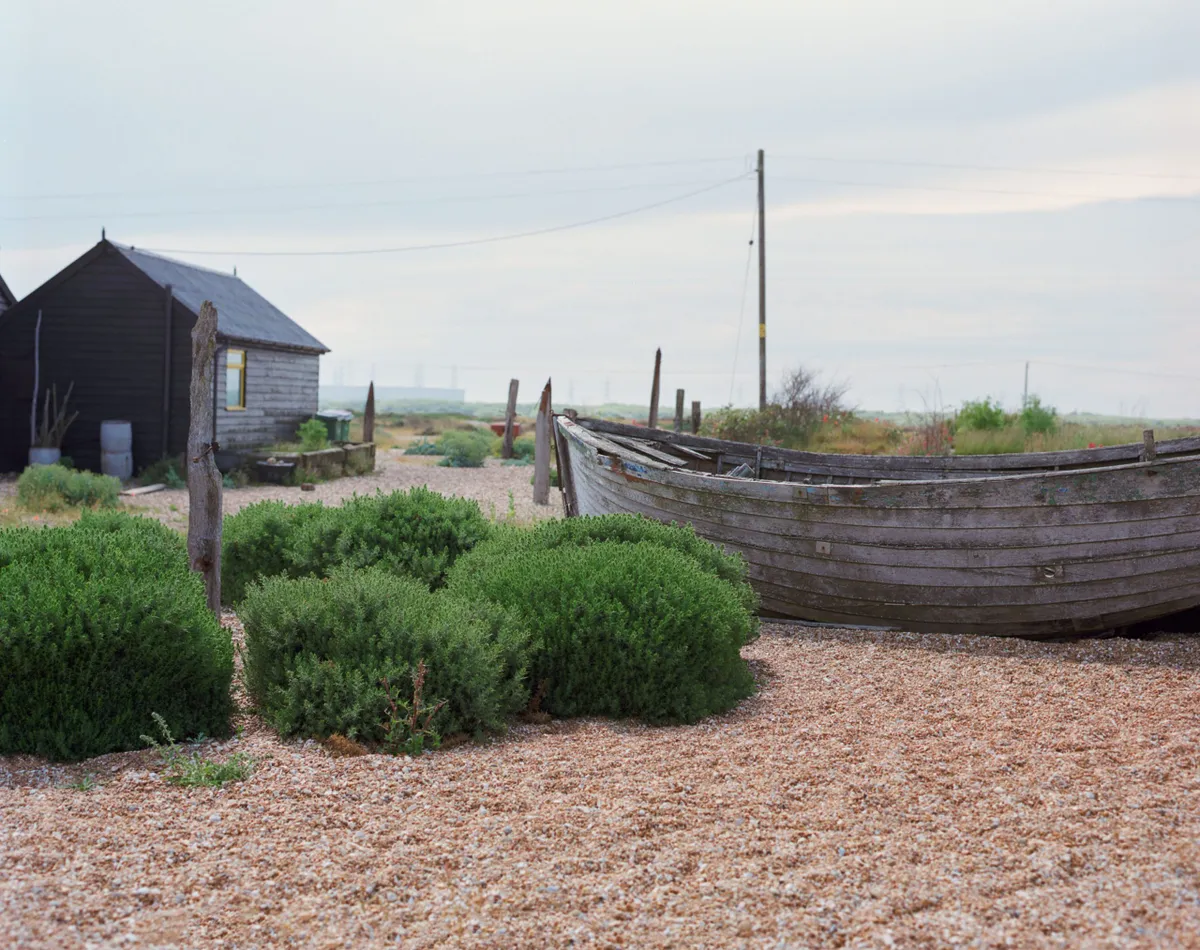
At first it seems daunting to garden without a fence, without delineation of where the garden starts or finishes, trying to create a picture without a shape to the canvas or frame. Dungeness is entirely without visible boundaries (a stipulation of the tenancy agreement from the Dungeness Estate). But conversely the garden is not limited or inhibited by its perimeter, it stretches as far as the eye can see, in all directions. A gardener’s intervention becomes a direct dialogue with landscape as a whole: the sky, sea, shingle, wildflowers, fishing boats, neighbouring cottages, lighthouses (there are two) and the nuclear power station (there are two of these too, one now decommissioned).
The back garden is different from the front, its template taken from the wildflowers of the ness that were growing there when Derek bought the cottage. Soon the emerging purple shoots of the sea kale were protected from unwary feet by driftwood collected from the tideline. Derek would sometimes add to them with stones or rusted iron found on the land near the power station, the flotsam left behind by the retreating spectre of the Second World War. The sticks and sculptures helped give the garden form and height, particularly in winter when many plants sought refuge under the shingle from the fierce easterlies. They also had the unexpected gift of providing much-welcomed perches for the migratory birds that navigate over the ness every year. Rare warblers from Russia would stand and catch their breath, staring in at the kitchen window. Then, without warning, they’d lift into the air, catch the wind and be off again to some far and distant land.
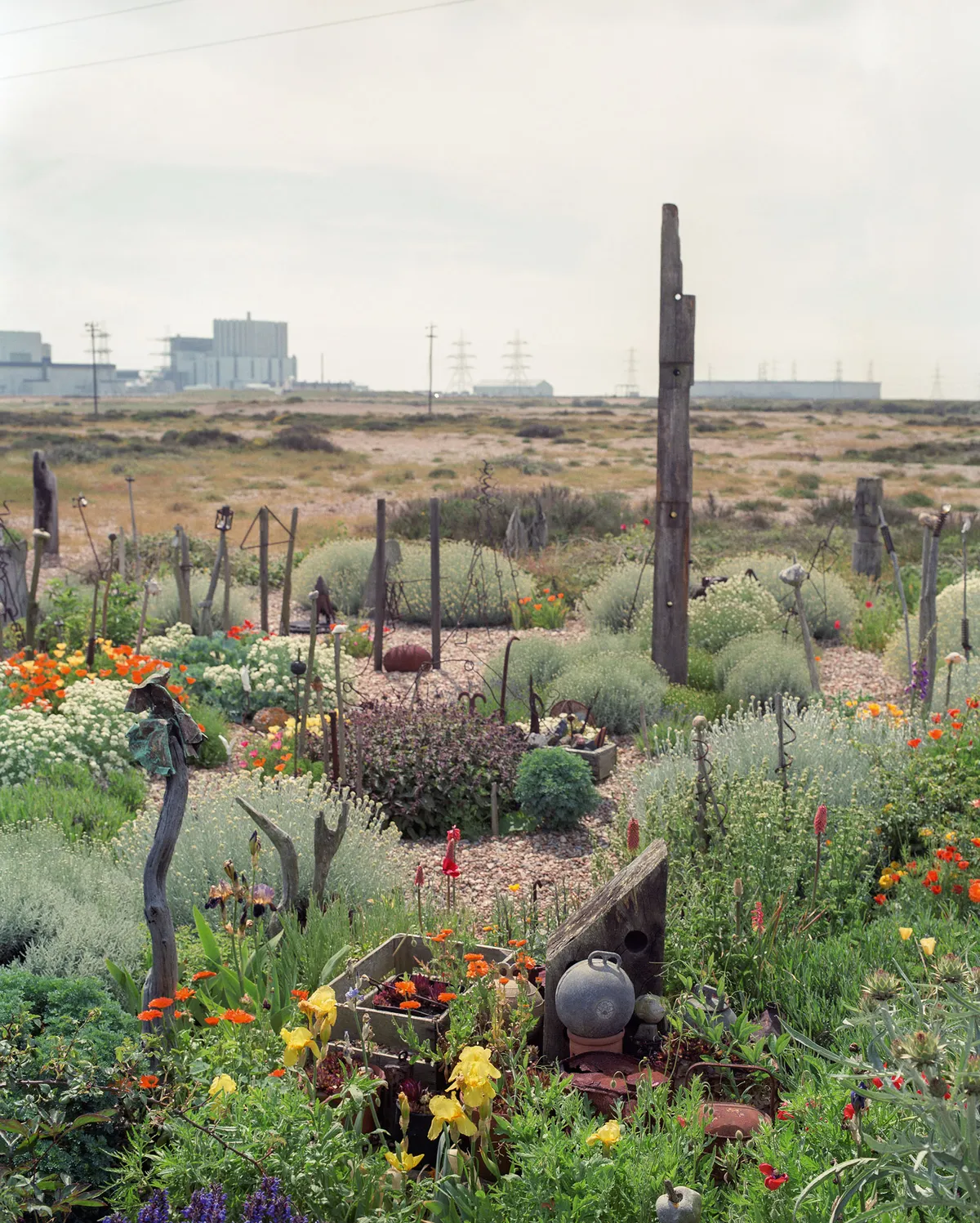
The absence of soil on the ness means there are no lawns, borders or flowerbeds; you’re free to plant anywhere. It is gardening’s abstract expressionism. Plants were put where they were thought to be happiest or most sympathetic. Derek kept the planting simple, largely wildflowers, with a few herbs, santolinas and helichrysums, a Rosa xanthina ‘Canary Bird’, a fig by the back door, and, set among these, the glow of a red-hot poker, a cool, blue circle of irises. More often the dried seedheads of foxgloves or wild peas would be shaken over a likely looking spot, in hope of them germinating the following year.
Because there are no flowerbeds, you could freely walk around the garden. Moving between the sticks and fennels, the paths and spaces between them become as important as the plants themselves. It is still one of my favourite gardens, in part because it is so intimate and immersive. Even with the passing of years, its spirit it seems lingers on. I’ve never gardened anywhere quite like it; it has reshaped my understanding of gardening. I miss the beauty and brilliance of Derek, and I miss those seemingly timeless days gardening together until the sun sank down behind the power lines radiating from the power station.
As for the future, I wish the garden well as it embarks on a new chapter of its life. I hope it will continue to inspire and bring joy as it did to Derek all those years ago.

